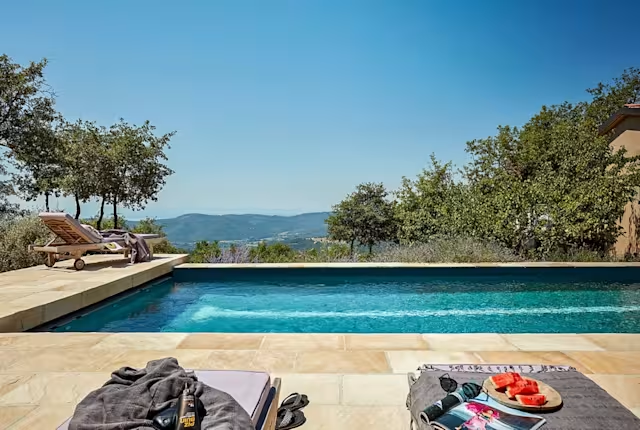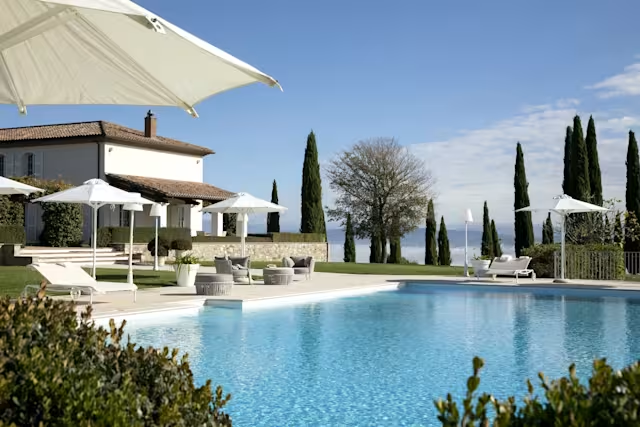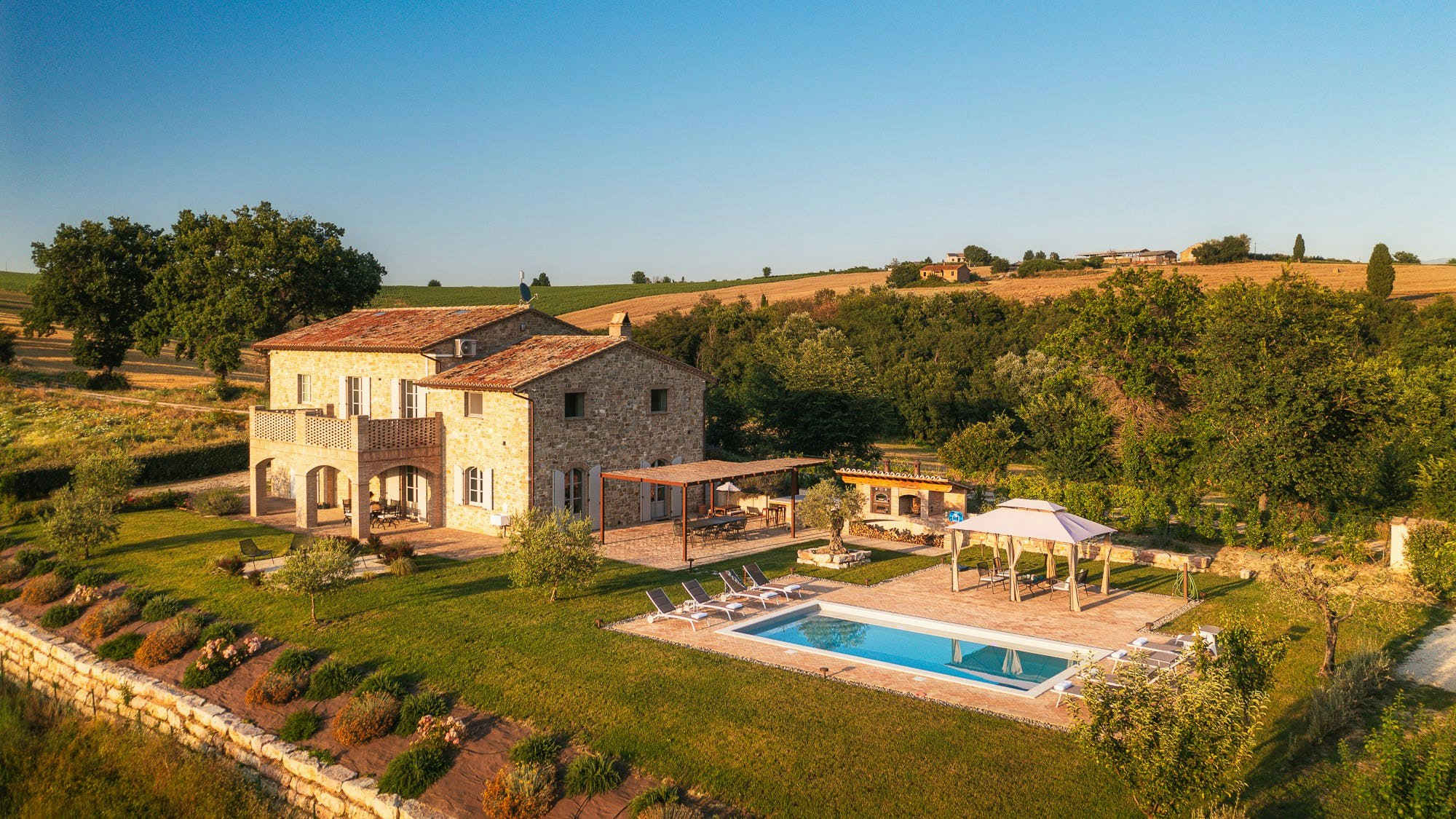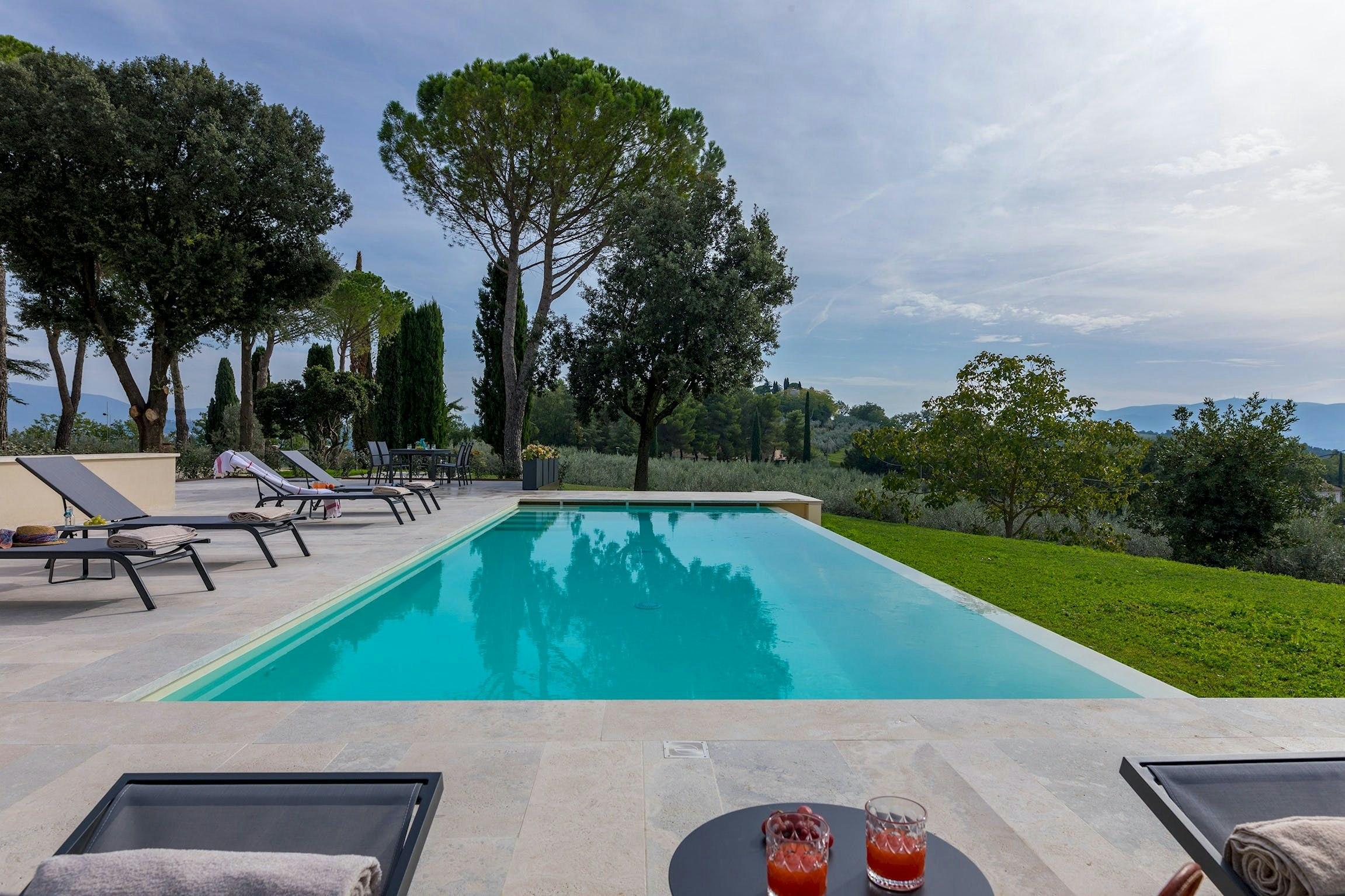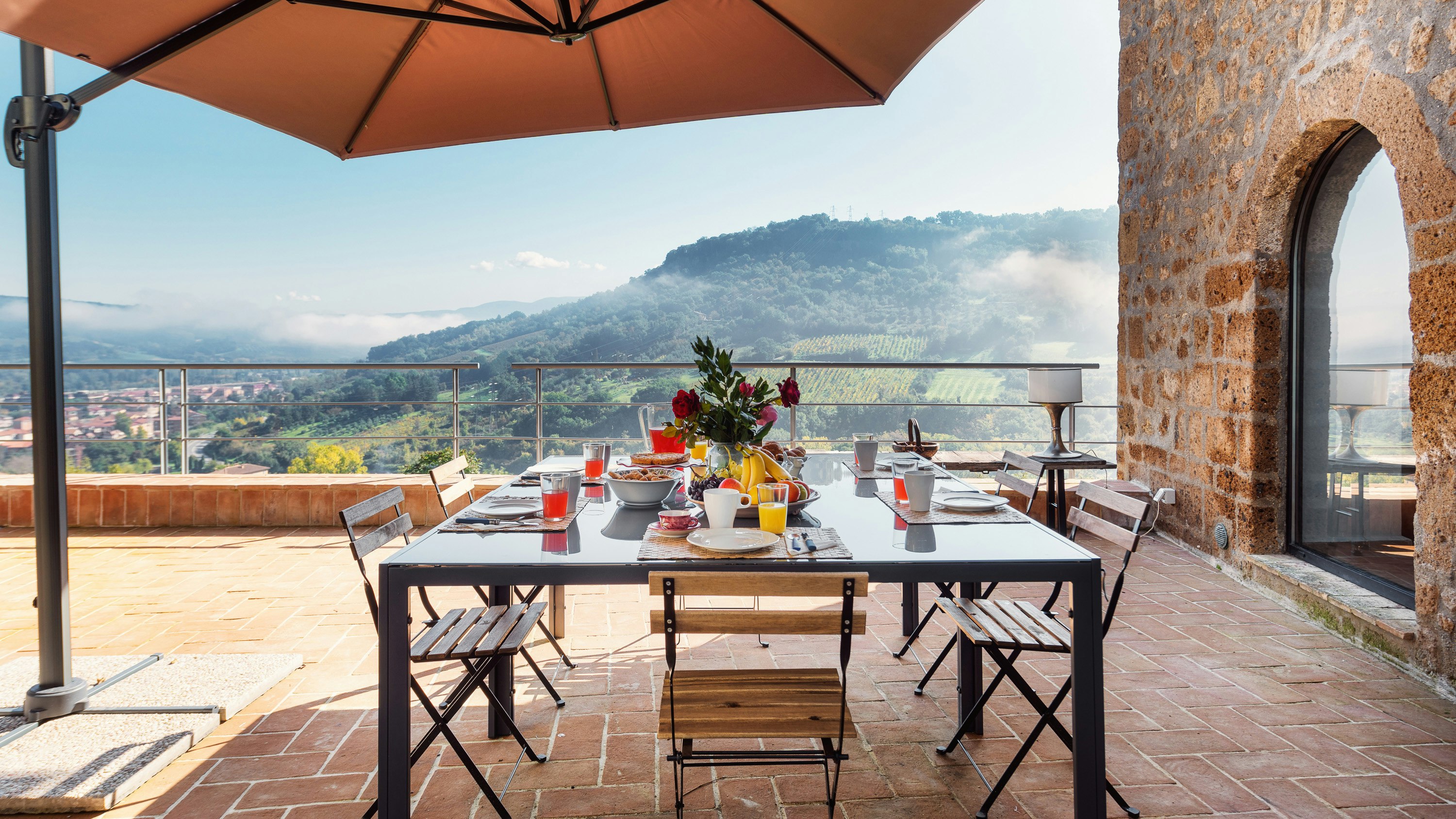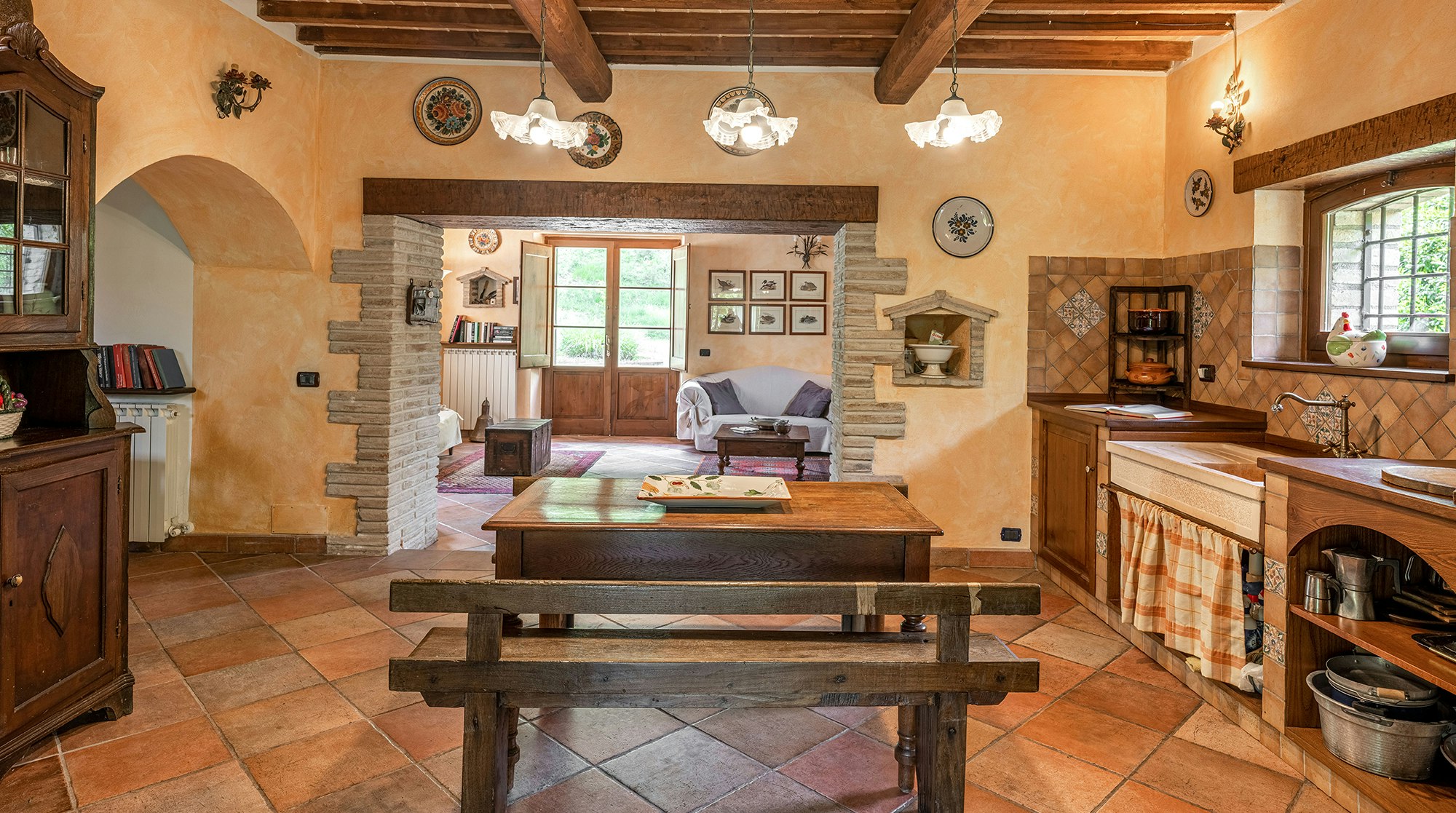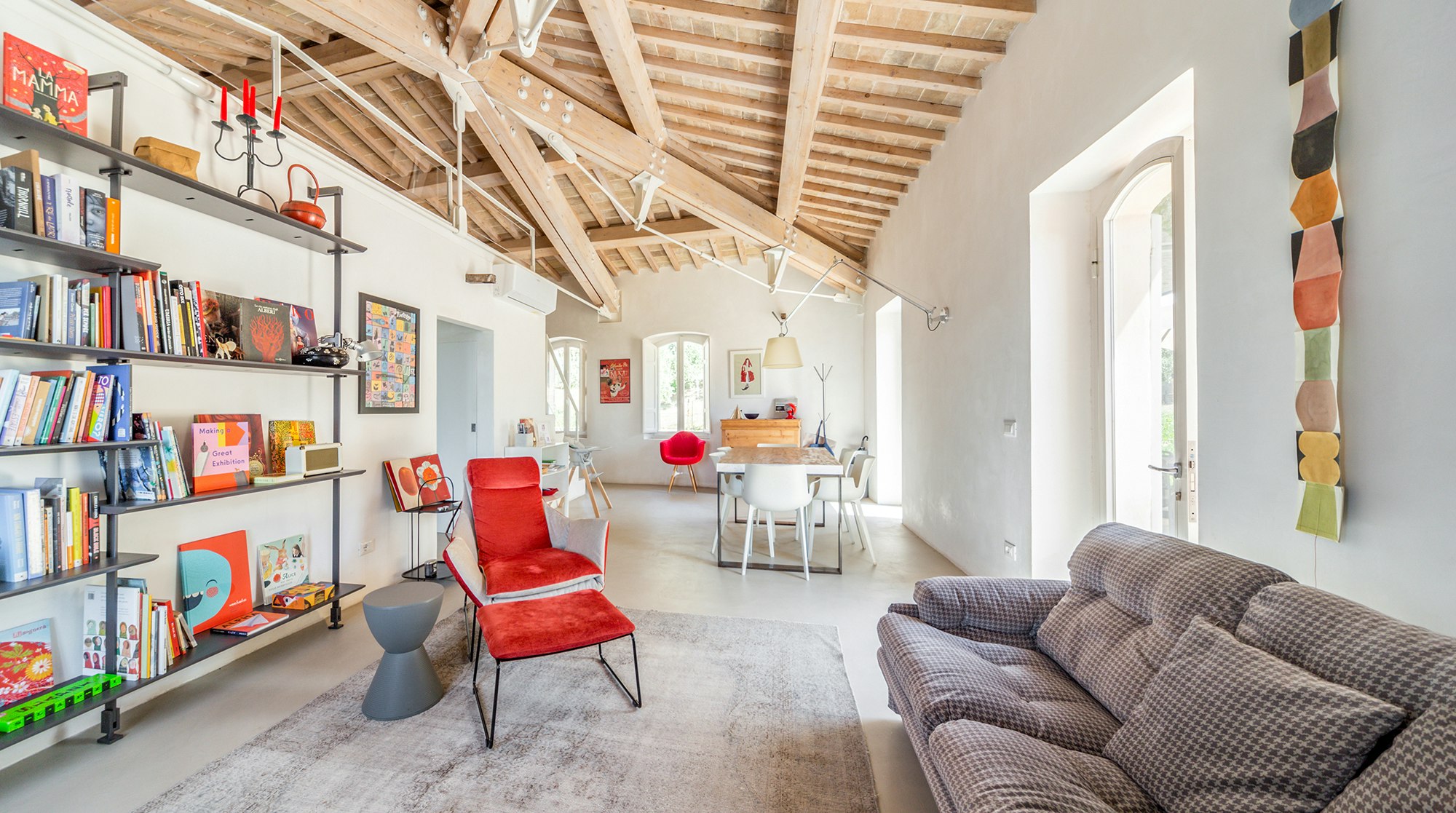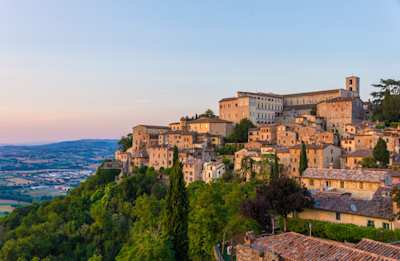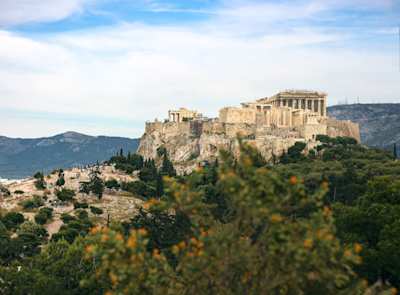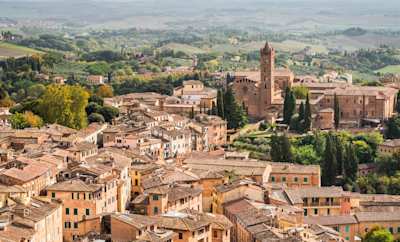Why You Should Visit Umbria For a More Authentic Italian Experience
From Renaissance art to outstanding wines and music festivals, there are so many reasons to visit this wonderful part of Italy
~
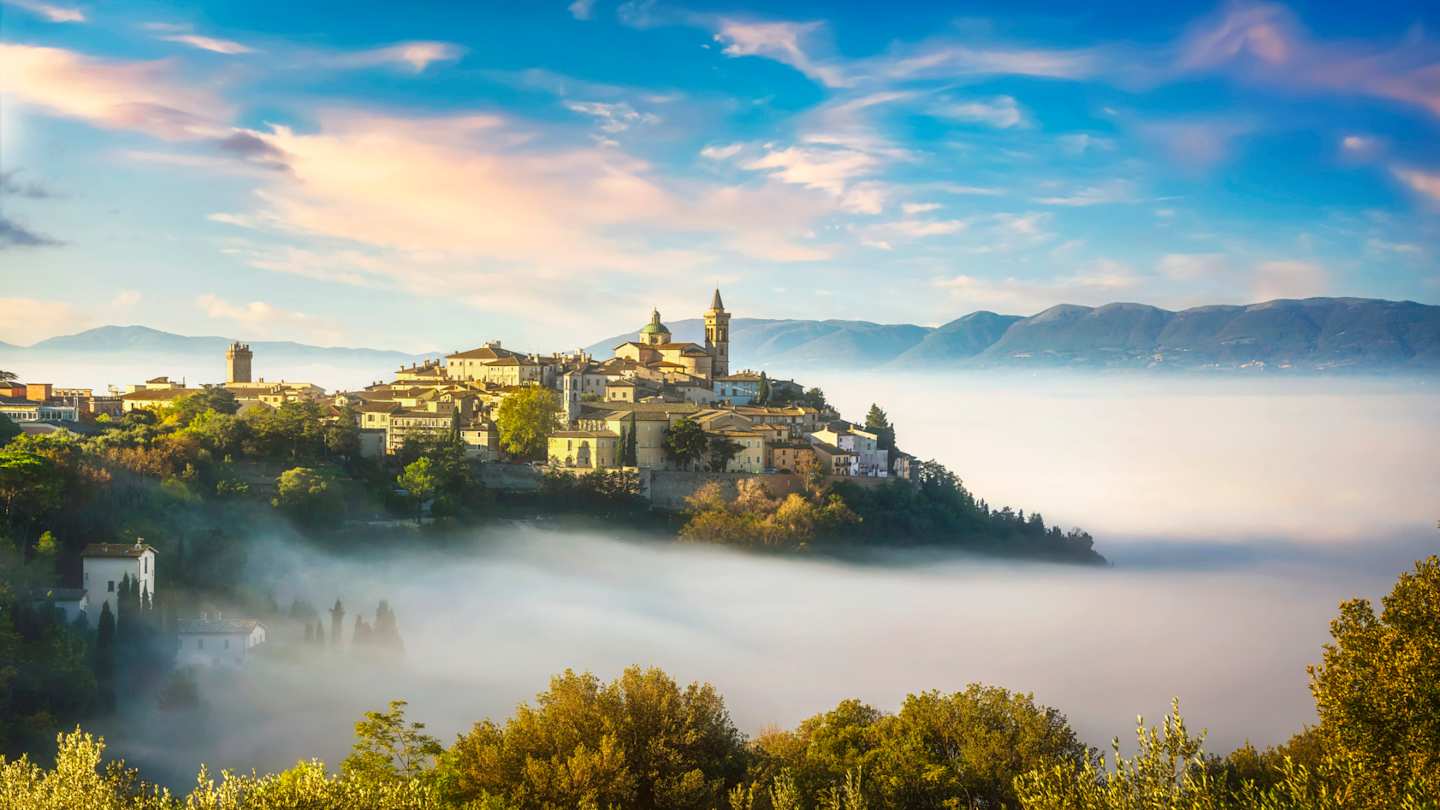
Nestled in the heart of Italy, Umbria is a captivating region where emerald green hills and vineyards stretch as far as the eye can see. But it's not just nature you'll find here – the area is also known for its delectable food, world-class art and extraordinary architecture. We can't recommend it enough to those wanting an unforgettable adventure through Italy's green heart. Our team of experts here at Plum Guide have chosen their top reasons why you should visit Umbria, so you can start planning an epic getaway.
Beautiful landscapes

Summer landscape with wildflowers at Piano Grande (Great Plain) mountain plateau in Castelluccio di Norcia, Umbria, Italy
Umbria’s undulating landscapes are one of its most redeeming features. Often referred to as ‘the green heart of Italy’, the rolling green hills, pristine woodlands and pastoral countryside are a haven for nature lovers. To the east of Umbria, you’ll find Valnerina, one of the region’s most scenic areas. This spectacular valley is made up of untouched forests, rivers and lakes, and is dotted with medieval villages like Cascia, Norcia and Arrone. The Valnerina attracts outdoor enthusiasts all year round, who come for excellent walking and cycling opportunities and high-adrenaline activities like mountain biking and canyoning.
Not too far from Valnerina are the mountainous landscapes of the Monti Sibillini National Park, which has some incredible hiking trails. It’s also where you’ll find the Piano Grande, a vast mountain plain. Between the end of May and mid-July, it explodes into colour thanks to the blossoming of wildflowers. Another must-visit is the Marmore Waterfalls, a breathtaking man-made waterfall created by the ancient Romans.
Lago Trasimeno
While we could’ve included this lake under the previous paragraph, we think it deserves its own section on this list of why you should visit Umbria. While this region may be landlocked, that doesn’t mean you can’t enjoy a day out on the water. Lago Trasimeno is the largest lake in Umbria and the fourth-largest in Italy. Despite its size, the water is never deeper than 6 metres, so you can swim easily during the summer. Surrounded by verdant hills, the scenery here is unbeatable. Take in the views while you windsurf or sail, or enjoy a leisurely stroll around the lake, popping into the towns and villages perched along the waterfront.
Within the lake are the three islands of Isola Maggiore, Isola Minore and Isola Polvese. While visits to Isola Minore are prohibited, you can still visit the other two – we particularly recommend Isola Polvese to take on the many walking trails crisscrossing the island. Afterwards, cool down with a swim at the small beach.
Ancient art and history

Panoramic view of the historic town of Assisi on a beautiful sunny day with blue sky and clouds in summer, Umbria, Italy
Umbria is a fascinating place for those interested in art and history. It’s home to some of the oldest towns in Italy, many of them in extremely well-preserved condition. The list of medieval towns worth visiting is a long one, but some favourites include Spoleto, Orvieto and Assisi. Each is bursting with Roman ruins, medieval city walls and ancient cobbled streets. There are also plenty of architectural gems to discover, such as Spoleto’s Ponte delle Torri, Orvieto’s cathedral and Assisi’s Basilica di San Francesco. The latter is one of the country’s most important churches and is a UNESCO World Heritage site. Today, it remains a pilgrimage site for those visiting the tomb of Saint Francis.
Many of these churches and cathedrals are home to age-old frescoes, stained glass windows, sculptures and paintings that will excite any art lover. There are various galleries and museums in Umbria where you can admire impressive pieces of art – the National Gallery of Umbria in Perugia is chock-full of artwork across different periods, ranging from Umbrian tapestries to Renaissance masterworks.
The slower pace of life
The best part about visiting Umbria is that you’ll get it all to yourself. Despite being surrounded by heavily-visited regions like Tuscany and Lazio, Umbria manages to stay relatively off the tourist trail. Part of the reason for this is that it has no coastline or big cities, but if you’re willing to look past that, you’ll find a plethora of delightful locations with little crowds.
Apart from Assisi and Spello, which are becoming busier each summer, its towns and villages are rarely overrun with holidaymakers. Rather than rushing from sight to sight as you would do in Florence or Rome, we love how Umbria forces you to slow down. Take your time ambling through historic town centres, sitting back with a drink at alfresco cafes and people-watching in the piazzas. It’s the perfect destination if you want to experience a more authentic taste of Italian life.
Delicious food

Italian market stall with wild boar salami and olives, Umbria, Italy
Speaking of taste, one of the top reasons why you should visit Umbria is its mouthwatering cuisine. With its fertile soil and abundant water sources, the region is ideal for growing crops like vegetables, wheat, grapes and truffles. You’ll also find local produce like honey, olive oil and salami, and Umbria’s top-class restaurants are the best place to try them. If you’re here on a special occasion (or even if you don’t need an excuse to treat yourself), there are many fine dining restaurants which are worth splashing the cash. La Locanda del Cardinale in Assisi serves refined Italian dishes in a beautiful setting above the remains of an ancient Roman villa.
So, what kind of dishes should you look out for? As well as classic Italian cooking, you’ll also find cuisine traditional to Umbria. Torta al testo is a circular flatbread stuffed with prosciutto, cheese and greens like spinach or chicory. For another light meal, try frittata al tartufo. Eggs are beaten and poured into a hot pan, then topped with slices of black truffle, salt and pepper. For pasta lovers, pasta alla Norcina is a delicious dish made with Norcia sausage, onions, white wine, cream and grated pecorino cheese.
Exquisite wine
No Italian meal is complete without a good bottle of local wine. Lucky for you, Umbria is one of Italy’s top wine regions, producing famous names like Montefalco Sagrantino, Torgiano Rosso Riserva and Orvieto Classico. Oenophiles can enjoy tours and tasting at the many vineyards and wineries in Umbria’s marvellous countryside. Your first stop should be the prestigious winemaking town of Montefalco. There are many vineyards to choose from, but we can highly recommend Montioni – Frantoio & Cantina and Cantina Fratelli Pardi S.S. One place that you can’t miss is Castello di Montegiove in Orvieto. Set in a medieval castle, you can learn about traditional winemaking techniques while enjoying the amazing scenery.
Even if you don’t make it out to a vineyard, you’ll find wine bars in Umbria’s towns where you can treat yourself to a pre-dinner aperitif. Make sure to take part in aperitivo, an Italian pre-dinner tradition where you can snack on crackers, olives and other nibbles while enjoying a glass of vino.
If you’re staying in Spello, Enoteca Properzio is a wonderful spot for a tasting. A friendly sommelier will guide you through their best wines.
The capital is the City of Chocolate
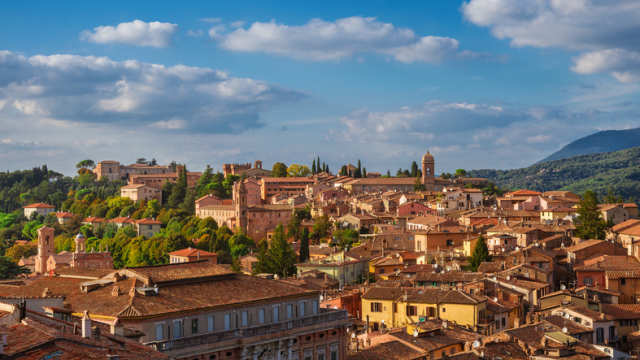
Perugia historical centre skyline, Umbria, Italy
For those with a sweet tooth, one of the best reasons why you should visit Umbria is because its capital has been dubbed the City of Chocolate. Perugia is where the Baci Perugina was born in 1922, an iconic Italian chocolate. Translating to ‘Perugina kisses’, these hazelnut-filled chocolate pralines each have a love note written in their silver wrappers, making them popular gifts for loved ones. Over time, the Perugina factory became renowned for its high-quality chocolate, while smaller producers and artisans set up shop in the town. You’ll want to make sure you visit Perugia in October, as this is when the annual Eurochocolate is held. It’s Europe’s largest chocolate festival, a lively event with workshops, exhibitions, tastings, entertainment and chocolate sculptures.
Just outside of town is the Museo Storico Casa del Cioccolato Perugina, a chocolate museum where you can learn the history of chocolate-making in Italy, visit the factory and taste the goods. It’s a real-life Charlie and the Chocolate Factory situation, although we can't promise any chocolate rivers inside.
Exciting festivals and events
If stuffing yourself with chocolate wasn’t enough, there’s plenty more to keep the foodies happy. As well as Eurochocolate, Umbria is home to many exciting food festivals and events throughout the year. The Saffron Market Fair in Cascia is dedicated entirely to saffron, taking place after picking the treasured spice. During the fair, restaurant menus will feature dishes that use the spice, while artisan shops sell saffron yoghurt, biscuits, desserts, and many more. If it’s black truffles that take your fancy, follow your tastebuds to the Norcia Black Truffle Fair instead.
Musicophiles won’t want to miss the annual Umbria Jazz in Perugia, which attracts local and international performers. You’ll also love the Festival dei due Mondi in Spoleto, a large music festival showcasing a mix of opera, dance, drama, visual arts and seminars.
For history lovers, head to Bevagna for the Mercato delle Gaite, an exciting fair and historical reenactment of the Middle Ages. There’s fun for the whole family, with historical costumes, medieval music performances, feasts and workshops showing what working life was like during this era.
